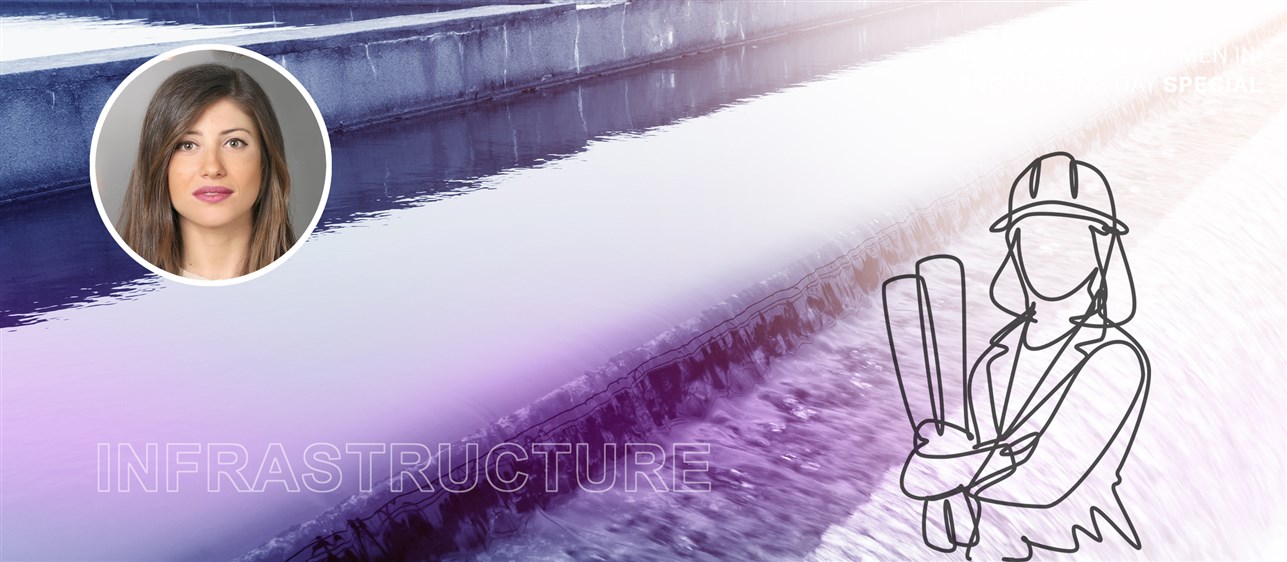
Date29.06.21
Yara is an environment and infrastructure engineer who specialises in water infrastructure.
1. What drew you initially to the field of environmental engineering? And after over seven years of experience, what’s motivating you to remain in this field today?
What drew my attention to the field is the importance of the sustainable use of water resources globally and especially in our region. As an engineer, I feel happy that through my work, I can contribute positively to the environment.
What motivates me after all these years is the ability to create healthier, more sustainable and more environmentally friendly infrastructure systems. At Dar, I have the chance to continuously expand my role and gain greater exposure to new responsibilities, all of which help me develop my skills.
2. Your main scope is usually described as designing wet infrastructure utilities and systems for projects. How does this work in practice?
While working on a variety of projects at Dar, I have strengthened my experience and widened my knowledge in the field of infrastructure design. I have worked on several infrastructure networks such as TSE, irrigation, water supply, firefighting, wastewater, and stormwater networks.
Usually, at the beginning of the project, we generally expect to obtain all as-built drawings of existing utility systems within and surrounding the project boundaries. During this stage, we generally conduct an analysis of the existing conditions on the site in order to propose options for the Conceptual Design, taking into consideration the client’s expectations and the requirements of the infrastructure demands in accordance with the country codes and standards. After receiving the client’s feedback and approval on the concept, we begin detailed design which will require the mobilisation of a multi-disciplinary team with expertise in water treatment, water resources, and environmental, electrical, mechanical, architectural, transportation, and structural engineering.
As infrastructure engineers, we commonly use tools and modelling software – such as WaterGEMS, StormCAD, SewerCAD, Pipe2CAD, Building Information Modelling (BIM), etc. – that help us understand how infrastructure networks behave as systems This therefore provides us with a comprehensive support tool for wet utility networks.
3. What was the most memorable project you worked on? Tell us about a project that you engaged in – either professionally or personally – that impacted you significantly or that you are most proud of.
My most memorable project was one of the those I worked on when I first started my career at Dar: the Khan Antoun Bay drainage project. Solidere commissioned Dar to check the stormwater channel in Khan Antoun Bay, and to provide a suitable solution for the stormwater drainage of the area in view of the numerous constraints in the existing conditions on site. I was therefore involved in a series of site visits in order to efficiently gather information about the project. This project significantly impacted my early days as an engineer, and, to this day, each time I walk around this square after a storm event I feel so proud that all the problems were solved with regards to all the challenges and site constraints we faced while designing the drainage of this area.
4. What are the most challenging moments in a project for you? And what part of the process is the most enjoyable?
The most challenging moments are usually when you are handling several projects at the same time, yet you need to meet each project's requirements and deadlines to deliver the best results for our clients. However, through diligent work and focus, as well teamwork and coordination with the various stakeholders, we are able to deliver the required work following the project timeline.
Due to the presence of new projects having new requirements, I have learned to challenge myself and tackle more complicated problems in order to find the most efficient procedures for reaching the required goals; this is challenging but rewarding at the same time.
5. Tell us about a significant engineering challenge that you faced and resolved or about an experience that truly impacted you.
I have worked on the TSE network of Qiddiya, a challenging and large-scale project.
One of the greatest challenges for Qiddiya is to transform the arid landscape into a green one using very limited water resources.
A special approach was considered in designing the TSE network because sustainability guidelines were to be followed, where water availability is limited, and where there is a need to reduce irrigation requirements as much as possible without compromising on the quality of plants.
In addition, the Qiddiya site – with its great topographical variations, including a 200-m cliff overlooking a spacious lower plateau – presented a challenge in controlling the pressure in the network since TSE was conveyed by gravity to the lower plateau. Therefore, we had to provide solutions like proposing pressure break tanks to minimise the excess pressure that is generated by gravity in the network, while simultaneously maintaining the minimum residual pressure required in the system.
At the end, I’m glad I took part in the design of this project as I learned how to face new challenges, new requirements, and to be open and always strive to learn further and continue to progress through challenging situations.
